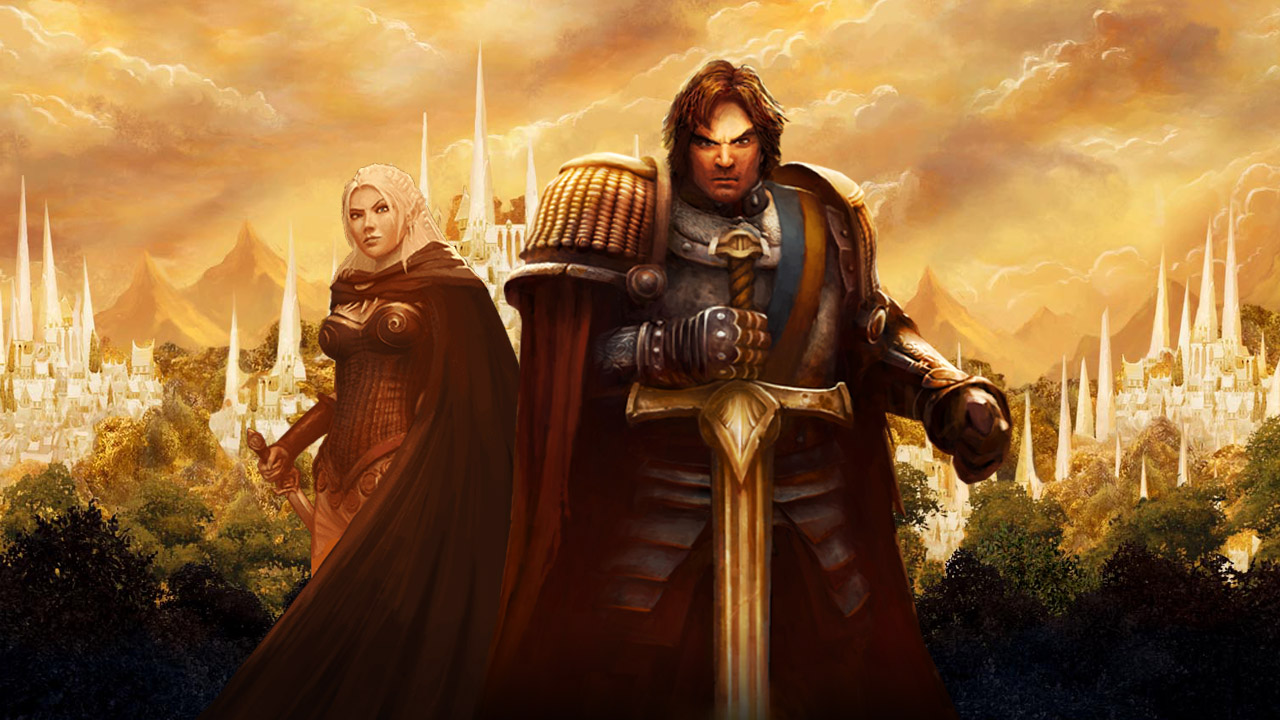When I was given Age of Wonders 3 to review, it just so happened that I had started playing Civilization 5 for the very first time in my life. Considering my love for the strategy genre I was furious with myself that I hadn’t begun playing Civ 5 sooner, because I was absolutely loving it. So when my editor introduced me to Age of Wonders 3, I figured it would have to be something fairly spectacular to pull me away from Civ. What I was greeted with fulfilled just about every dream that I could possibly have for a 4x strategy game.
Naturally during this review I am going to draw a lot of comparisons between Age of Wonders 3 and Civ 5, and that’s because there are definite and obvious similarities, starting with a UI that will feel very familiar to what we have all seen before in previous 4x games. Any player who has played Civ 5 will easily assimilate to the slight differences, and from my perspective that is most definitely a good thing. The user interface is extremely functional and easy to learn for fans of the genre, you’ll never feel like you’re fighting against a poorly designed system that’s hampering your experience. This usability is perhaps at the expense of the more stylised look that you would expect in a fantasy game, but the menus are hardly unattractive.
Whilst the menus might not have the visual appeal that you might expect, the tactical map graphics are absolutely stunning to look at. Bright colors with just enough detail to keep the terrain interesting to look at make this game a pleasure to play for long periods of time. After spending countless hours with Age of Wonder 3, I’m still stunned every time I jump in again. Shining blues, greens and reds result in what I can easily describe as the most stunning fantasy world I’ve yet seen in a strategy game, and arguably the most beautiful world I have ever seen in any strategy game. I felt like I was looking down at the weird and wonderful world of The Witcher 2. Unfortunately the battle mode’s aesthetics doesn’t quite hold up to the same lofty standard, but it’s definitely still a high fidelity game and a massive step up from its predecessor.
One of the main gameplay elements of the game is the hex-based battle system that you can use to fight your own battles rather than simply auto-resolving. Unlike the quick animation that you see in many other 4X titles, Age of Wonders allows you to fight your own battles in a Heroes of Might and Magic-style turn-based battle. Keeping in mind that I’m normally the type of person who prefers the grand strategy element of the genre to the actual battles themselves, I find myself coming back to this battle system over and over again - and adoring every minute of it.
The smaller number of units, normally only 6 vs. 6, might seem small scale to some of you, but the level of thought involved in winning easily matches the large scale battles of the Total War franchise. There are a huge number of units for each faction, and this coupled with a large amount of factions anyway means that any sort of unit could be present on the battlefield, and you must therefore approach each battle situation differently. On top of this each unit has multiple different abilities and attacks that it can use on the battlefield, the result of all of this being that unless you keep your wits about you you’ll find yourself getting walked over by a previously week opponent.
There were multiple occasions where I was decimated in battles that I felt I should have won, because of one stupid error from me or a random powerful enemy ability. This is rare enough that you don’t find yourself feeling cheated by the game though; instead you just feel a sense sadness at your own shortcomings. And given that you can control where your armies are placed on the world map, you only have yourself to blame if you find yourself fighting an unwinnable situation.
But to me just the sheer variation of these battles kept me coming back every time. I always wanted to know whether or not there was going to be an unexpected tactical element that I hadn’t considered: that a flame tank might have the ability to destroy 3 units at once, or that a cannon can smash through more than one unit in each shot.
As with any 4x strategy game one of the main goals of the game is to expand your cities by producing new buildings. Unfortunately for the pacing of the game there is only one production slot for each city which is shared between units and buildings. This sometimes slows the game down to what feels like a standstill when combined with the generally slow expansion rate of territory; but as compensation for this slow production, map exploration serves as a large part of the gameplay experience.
There is an abundance of things to explore above and below ground; old watchtowers, ruins, mines and much more are scattered in every corner of the world and they all provide certain economic benefits, although the strength of your economy is not the crux of a successful game. This is a game that encourages warfare through its brilliant battle system, and as such to win a diplomatic victory is not the easiest or the most satisfying way of ending the game. Your economy exists merely to create and service the armed forces as they fight towards a domination victory.
Perhaps the most important way that Age of Wonders 3 differs from Civ 5 is the inclusion of heroes. Heroes are unique units that can fight on the battlefield much like any other, except that they have a multitude of attacks and effects that are difficult or impossible to attain for normal units. Heroes can also use their Hero Powers to cast spells or apply effects from what they have unlocked, which can vary from dropping a fan of knives to summoning Dire Penguins (who are dedicated to evil) to send against your enemies. Each faction has to mine and gather their own mana for spell casting, but are then allocated spellpower on a battle-by-battle basis. This system means that you must maintain a mana pool, but you’re unable to spam spells because of your limited spellpower supply.
Your play style for each game is decided by the character hero that you create, who can be customized in so many ways that it will boggle your mind to start with. The main selections for the character, race and hero type, dictate the technology tree available to you, meaning that there are a large amount of different faction combinations to mess around with. This hero also has the ability to cast spells onto the tactical map, spells that can be extremely powerful given the proper environment.
It should be noted though that heroes are not indestructible (apart from your main hero, who will return every time he dies). They can die just like any other unit, and once dead they are gone forever. This makes them feel even more special, as mortality does, but can mean a large amount of wasted time because of the insanely deep hero customization that can be rendered completely useless as soon as the hero dies. This will almost certainly annoy some of you, but it allowed me to form more meaningful relations with the long term survivors and made me fight even harder to keep them alive.
Sound design exudes polish, with a soundtrack that perfectly fits the fantasy genre. It might not be the most memorable soundtrack to ever grace your ears, but it definitely does its job of pulling you further into the game world. Meanwhile, there’s a wealth of content to keep you occupied for a very long time. A couple of campaigns, a generous handful of scenarios or games on random maps fill out the single-player, while the multiplayer and level editor (though, sadly, no Steam Workshop support) provide plenty of long-term fun.
I went into my Age of Wonders 3 review in an attempt to find a competitor to Civilization 5, and I was greeted with something truly brilliant that in nearly every aspect is - at least for me - the superior game. The fantasy style, when applied to the 4x genre and coupled with a Heroes of Might and Magic style battle system, has bred something that will stay with you for a very long time.
It might not be perfect, but it’s about as close as you can get and one of the best examples of the genre in recent memory.


